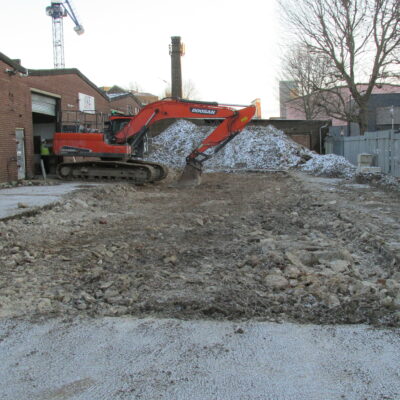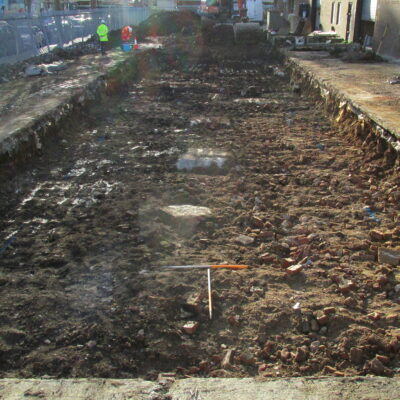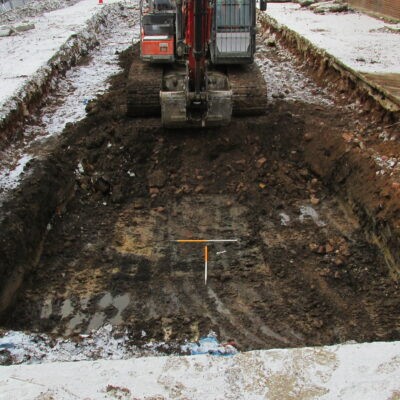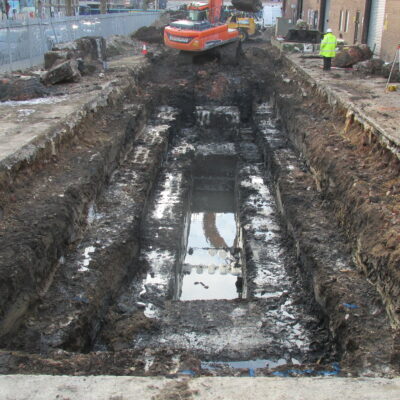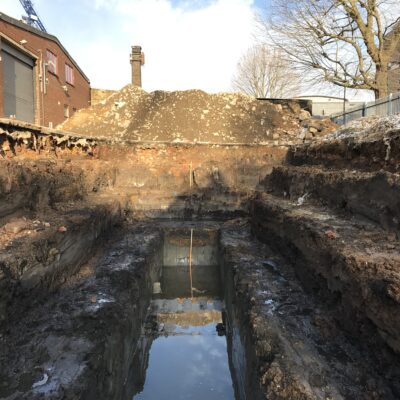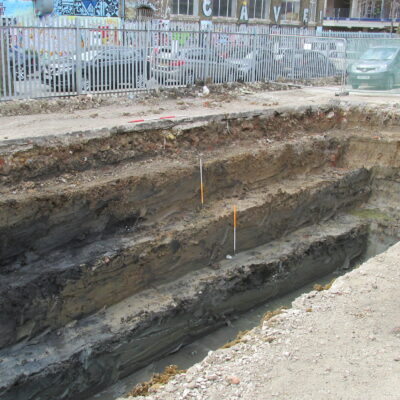Archaeological Field Evaluation, London
An Archaeological Evaluation in the Fish Island area of Hackney was undertaken, comprising six trenches excavated to a significant depth.
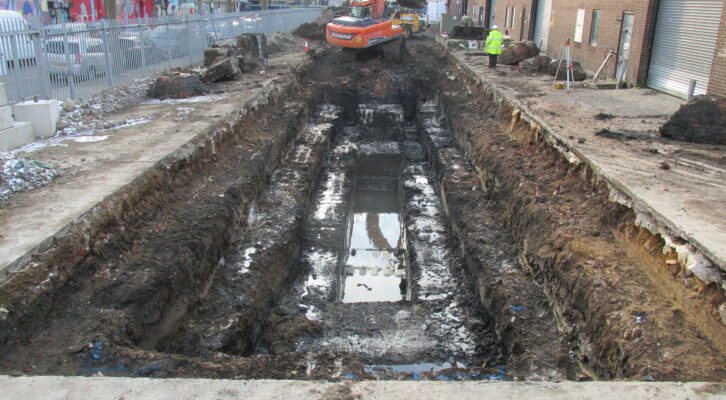
In Brief
Key Points
- Programme of archaeological works, excavated at depth
- Tier 2 Tower Hamlets Archaeological Priority Area
- Structural foundations relating to Broadwood’s Piano Factory of 1902 were identified
Summary
The Site lies within the NE part of the Tier 2 Tower Hamlets Archaeological Priority Area, representing the known extent of a Roman settlement and its immediate surroundings and the probable site of the crossing point where the London to Colchester Roman Road traverses the Lea.
This area thus had potential to contain structural, industrial and burial evidence of Roman date as well as evidence for prehistoric settlement activity and for buried land surfaces dating from the early Holocene period onwards.
Documentary evidence suggested that the Site remained as undeveloped sparsely populated marshland and meadow until c.1880. The water channels identified on the 1871 OS map were not identified, but it is likely evidence for these may be encountered NE of the development area.
Some structural foundations relating to Broadwood’s Piano Factory of 1902 were observed in the form of the three concrete stanchions observed along the base of one trench, and one stanchion in another. Additionally, a few in-situ, though mostly truncated, elements of brick-built footings were observed in the trench sections, which correlate with the footprint of the former building as depicted on the historic mapping since 1916.
Aside from the aforementioned structural elements observed there was no further structural features or deposits relating to the industries which occupied the Site, such as the pianoforte works resident from the late 19th Century up until the 1930s or for any of the furniture works which occupied the Site thereafter until its redevelopment to its present form in the late 20th Century.
Results
The Archaeological Field Evaluation comprised trenches excavated to c.4m bgl with some structural foundations relating to former industries revealed.
Aside from the aforementioned structural elements observed there was no further structural features or deposits relating to the industries which occupied the Site, such as the pianoforte works resident from the late 19th Century up until the 1930s or for any of the furniture works which occupied the Site thereafter until its redevelopment to its present form in the late 20th Century.

